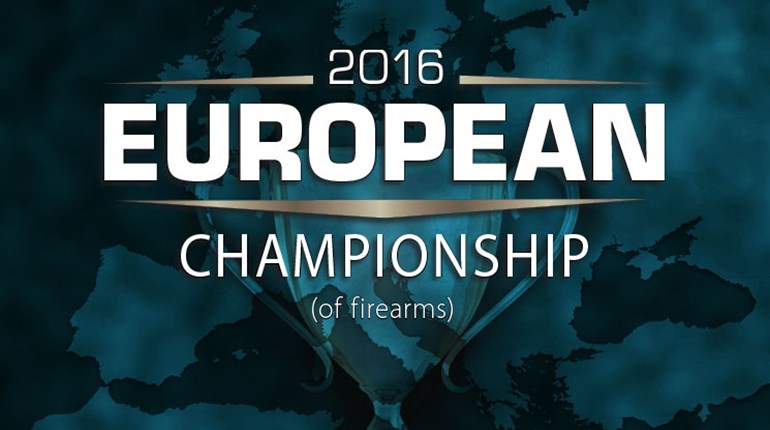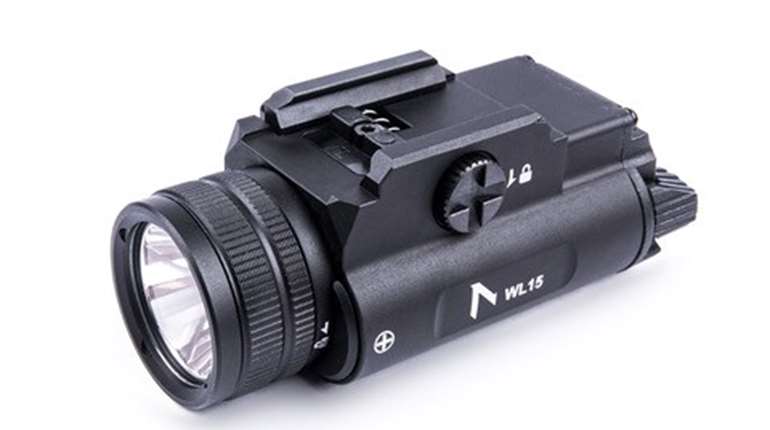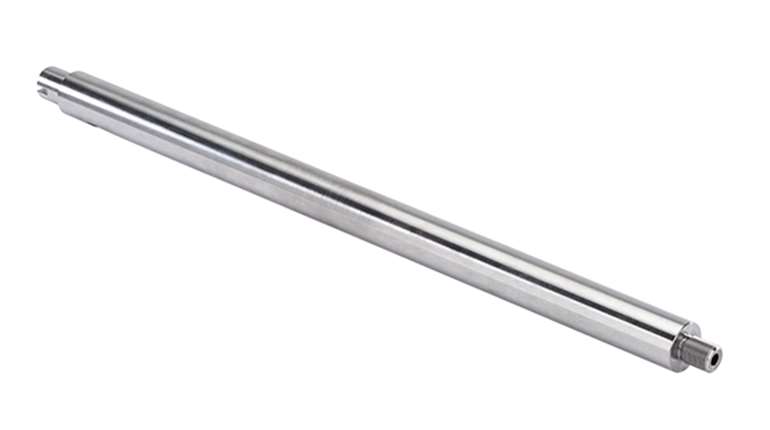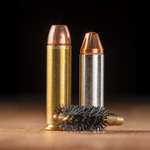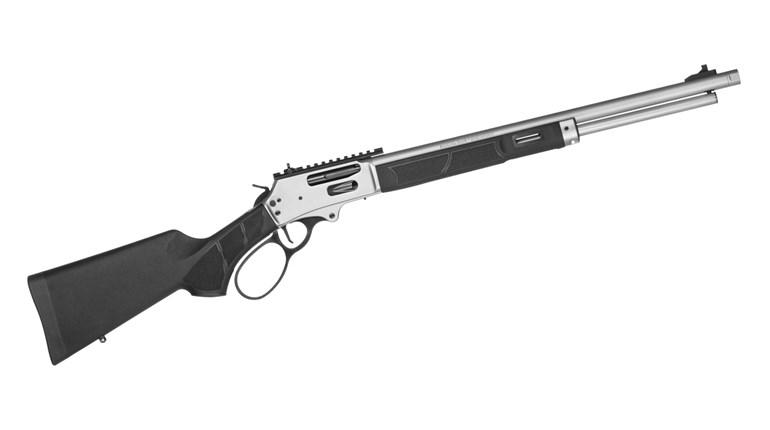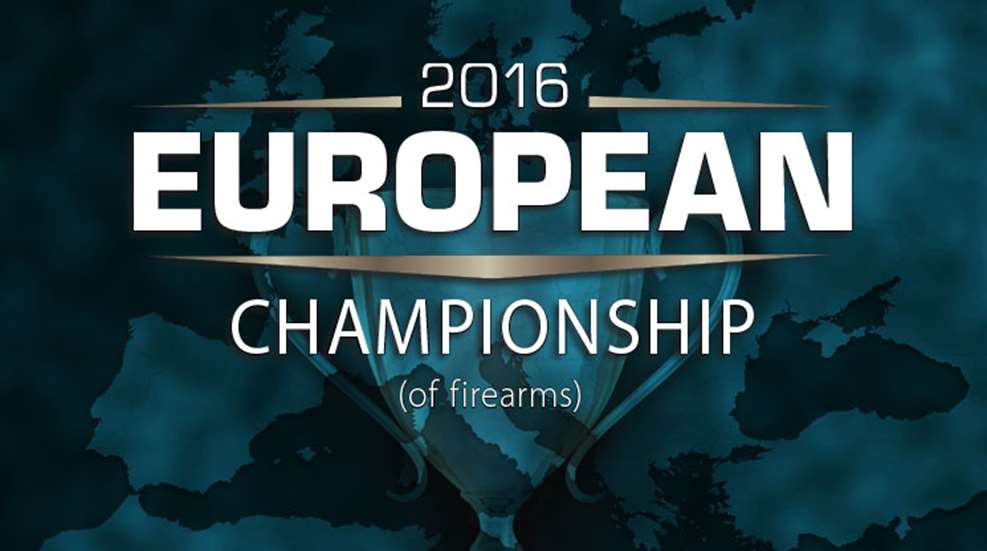
Every four years, Europe holds a tournament to determine which of its nations is best at the sport we call soccer and largely ignore. What if each country that qualified for the Euro tournament finals was represented by a firearm associated with it?
We get it. Soccer is about as popular among gun owners as the Zika virus. But, it is growing in popularity across America for reasons many do not understand. Rather than act like old fogeys and pooh-pooh this development, we figured we could make soccer vastly more interesting by representing each team fighting for the European Championship (which is a big deal, apparently, outside of North America) with a firearm somehow historically tied to the nation it represents. For those aspiring soccer fans among our readers, we’ve also included bits and pieces of information that may actually be of use, should you catch any of the action from France in June and July. And if you don’t care at all? Well, we’ve got pictures of 24 cool guns for you to look at and tell us why we picked the wrong ones. Enjoy!
GROUP A
It may come as a surprise that an M4 represents Albania. After all, the country was communist-run until 1991, so some sort of Eastern-bloc rifle would make more sense, right? Well, as of 2009, Albania is a full NATO member and is modernizing its military with more-NATO-like equipment, including the M4. There is some poetic justice here, since the best ethnic Albanian soccer players—Xherdan Shaqiri and Adnan Januzaj—will be representing Switzerland and Belgium in the European Championships, their parents having fled the country in the 1990s.
The hosts are represented by the FAMAS, one of the first bullpup rifles to be regularly fielded by a major military. The FAMAS had high expectations when it entered service in 1978. Soccer-wise, the French can boast a World Cup championship in 1998 and a victory in this tournament in 2000. Like the national team, the FAMAS has seen better days—it is currently slated for replacement. Unless goalkeeper Hugo Lloris and striker Olivier Giroud produce in this year’s tournament, they, too, could be looking at replacement.
There’s nothing pretty about the WASR-10, a Kalashnikov-type rifle made in Romania and heavily exported to the U.S. Likewise, there’s not a whole lot pretty about the Romanian national team, with exports like Costel Pantilimon (Watford) and Vlad Chiriches (Napoli) being solid, but hardly awe-inspiring players. That said, like the utilitarian WASR-10, the Romanian squad qualified for the European Championship, which is no small task.
Often overlooked militarily because its neutrality has kept it out of every war of the past 200 years, Switzerland nevertheless possesses a formidable defense force and arms industry. The SIG Sauer SG 550 is an iconic rifle that was once present in nearly every Swiss home, since the country relies on universal conscription for its manpower. The national soccer team is also overlooked since it hasn’t won anything of significance, but it, too, has an excellent defense, led by Stephan Lichtsteiner and Phillipe Senderos.
GROUP B
The SMLE played an enormous role in winning two world wars and dozens of smaller conflicts in the hands of the British Army. That was a long time ago. Likewise, the English national team’s greatest victory came in 1966, when it won the World Cup. Since then, England fans have dealt only with agonizing defeats and underwhelming performances. While the team’s biggest star, Wayne Rooney, is (in soccer terms) SMLE-old, there is hope for the future in young phenoms like Harry Kane and Dele Alli. Until the team records another big-tournament win, however, it, like the SMLE, will have to find glory in its past.
The choice of firearm to represent Russia was perhaps the easiest of this contest. With about 100 million in circulation, the AK-47 is the most prolific gun ever produced. Its rugged reliability is second to none. The AK has become analogous with Russia, as defender Sergei Ignashevich has become synonymous with the national team, earning 114 caps for his country. Striker Aleksandr Kerzhakov and midfielder Igor Denisov are also stalwarts as Russia seeks to perform at a high level prior to hosting the World Cup in 2018.
This year’s European Championships marks Slovakia’s first qualification for the tournament, and the Grand Power X-Calibur is also a relatively recent entry into the firearms world. Although the basic design dates back to the early 1990s, around the time of Slovakia’s independence, the refined X-Calibur first hit shelves in 2012. Slovakia’s national team is led by completely unrefined center back Martin Skrtel and high-scoring midfielder Marek Hamsik, who hope to make as good an impression as the X-Calibur in their Euro debut.

Wales hasn’t been independent since 1282. Therefore, it has not had an army or an arms industry of its own since pointed sticks were the primary defensive tool. By some quirk of European soccer law or something, Wales is allowed to compete as though it were a real country. Since functional firearms post-date Wales being an actual state, we have selected His Royal Highness, Charles Prince of Wales, to represent this region of Britain. The national team is led by Real Madrid’s Gareth Bale, who is actually Welsh, unlike Prince Charles.
GROUP C
Choosing a firearm to represent Germany was a difficult task, since the country has produced so many revolutionary and historically significant guns. In fact, we know how World Cup-winning German National Team Manager Joachim Löw must feel when forced to select members of “Die Mannschaft” from amongst so much talent. In the end, we decided on the Heckler & Koch MP5, an iconic submachine gun that remains a preferred choice for special forces operators around the world. Löw will return much of the squad that won the world title in Brazil in 2014, including Thomas Müller and Mario Götze.
Much like Wales, Northern Ireland is not an independent country, but is allowed to pretend to be one when it comes to soccer. Unlike Wales, however, Northern Ireland has seen much conflict in recent years. The ArmaLite AR-180 became a symbol of “The Troubles” that pitted Irish Republicans against Northern Ireland loyalists. Today, thankfully, peace has replaced violence in the region, and the national soccer team will make its European Championship debut led by Southampton’s Steven Davis.
Poland’s FB Radom factory has built some excellent, underrated firearms that have seldom been imported by American companies. While you may have overlooked the PM-06 Glauberyt or think it merely a copy of the Uzi, it is a solid, closed-bolt-operated submachine gun in widespread service with the Polish military and police forces around the world. Similarly, the Polish national team has produced some excellent players who are often overlooked, like prolific striker Robert Lewandowski and midfielder Jakub Błaszczykowski.

With an ongoing conflict in Ukraine’s east, arms are extremely important to that former Soviet Republic these days. The AK-74 is the standard-issue firearm for Ukrainian Ground Forces personnel. Like the AK-47 on which it is based, it is a solid, reliable gun that has seen combat around the globe. Ukraine’s national soccer team lacks the global presence of the AK-74, but includes reliable midfielders like Andriy Yarmolenko and squad captain Anatoliy Tymoshchuk.
GROUP D
The HS-2000 has proven to be one of the most popular handguns in the U.S. as the Springfield Armory XD. This polymer-frame, striker-fired pistol is ubiquitous in gun shops and concealed-carry holsters across the country. Croatia’s national team has also risen to prominence since the country’s independence, finishing third at the 1998 World Cup and producing world-class talent like team captain Darijo Srna, midfield sensation Luka Modric and striker Mario Mandzukic. Whether the squad can mimic the pistol’s success may be determined this summer in France.
While the Czech arms industry has produced many excellent firearms, our choice of a CZ 75 was easy. This pistol is one of the most popular handguns in the world for law enforcement, military and civilian use. It, along with the Czech national team, however, is perhaps showing its age. Striker Thomas Necid is the only real star on a team once littered with top talent, though all-world goalkeeper Petr Cech may get called up for the European tournament. If the soccer team can maintain its edge the way the CZ 75 has remained popular, it may surprise everyone with a deep run.
Two-time defending European Champions Spain enter the 2016 tournament after a disastrous World Cup in Brazil two years ago. In a similar fashion, the Spanish arms industry once churned out popular pistols like the Astra 400, but has fallen on hard times when it comes to defensive firearms. While the 9 mm Largo-chambered Astra is only a collector’s item today, it was at one time a military mainstay in Europe. Will the national team, which boasts decorated veterans like defenders Sergio Ramos and Gerard Piqué, suffer the same fate, or will relative newcomers like goalkeeper David DeGea unseat legends like Iker Casillas en route to another title?
Turkey is in Europe? Geographically, only a small part of it is on the continent, with the bulk of the nation in Asia. For soccer, however, Turkey is entirely European. Moreover, the Turkish arms industry is every bit as prolific as any European country’s, with tens of thousands of Turkish shotguns, pistols and even modern rifles like the Zenith MPT-76 (seen here) exported to the U.S. every year. Two other Turkish exports—Barcelona’s Arda Turan and Borussia Dortmund’s Nuri Sahin—could power this soccer-mad country deep into this summer’s tournament.
GROUP E
Selecting a single gun to represent Belgium—home of FN Herstal—was not easy. We ended up picking the “Right Arm of Freedom,” the FN FAL, because it is one of the most popular rifles ever fielded. Belgium’s national team also has no shortage of talent, with world-class defenders like Toby Alderweireld and Thomas Vermalen playing in front of keeper Thibaut Courtois. The Belgians are well-rounded, with Romelu Lukaku providing a scoring touch. Can this pre-tournament favorite match the international success of the FAL?
Always a contender at every major international tournament, Italy has high expectations heading into France 2016. With a tradition of soccer glory that includes four World Cup titles and a European Championship, Italy is well represented by nearly 500-year-old firearm manufacturer Beretta. While five centuries offer a multitude of options, we chose the ultra-modern ARX100, which took home our Golden Bullseye for Rifle of the Year in 2014. The Italian national team, led by ageless goalkeeper Gianluigi Buffon and midfielder Antonio Candreva, is expected to achieve similar success.
Returning to the Emerald Isle, the actual country occupying the southern three-quarters of Ireland has little in the way of domestically produced firearms. That said, the AR-180 made famous during “The Troubles” still turns up periodically in former IRA safe houses in the Republic of Ireland. The national soccer team also has not produced world-beating talent, although diamonds-in-the-rough like LA Galaxy’s Robbie Keane and Sunderland’s John O’Shea give the Boys in Green a chance.
Sweden actually has a significant arms industry, but the Scandinavian nation mostly produces larger weapon systems like the Carl Gustav recoilless rifle. For small arms, it is most famous for the Swedish Mauser, a home-grown modification of the German rifle. Interestingly, the greatest-ever Swedish soccer player (and current national team star), Zlatan Ibrahimovic, has a similarly Swedish back-story—he is the Malmö-born child of Balkan immigrants. While the Swedish Mauser is popular among collectors and old-school hunters, the Swedish national team is not a popular choice to go far in the tournament.
GROUP F
Another no-brainer in terms of what firearm to select, Austria’s Glock G17 revolutionized the handgun world. Likely the most recognizable modern pistol, the G17 has inspired a multitude of imitators and led to an entire sub-industry of polymer-frame, striker-fired handguns. The Austrian national team has not seen the same success. While squad captain Christian Fuchs leads a fine unit—including striker Marko Arnautovic—odds are against soccer fans equating success with Austria in the manner that firearm enthusiasts equate handgun glory with Glock.
Like its national team, Hungary’s domestic firearm designs had their heyday decades ago. The FEG 37M (read all about it on page 62) is perhaps the best-known Hungarian-designed and manufactured handgun, but today it is mostly a collector’s safe queen. Hungary’s national soccer team was twice World Cup runners-up, but the last such near-glory was 62 years ago. Today, the squad is led by midfielder Balázs Dzsudzsák and defender Tamás Kádár. While it isn’t expected to progress deep into the tournament, its match against arch-rival Austria should be worth the price of admission.
Iceland barely has security forces and has never had a domestic firearm-manufacturing industry. Its people, however, are descended from Vikings, who were quite prolific with all sorts of edged weapons. The most fearsome such tool was the Dane Axe, which seems an appropriate representative for this surprise qualifier. Led by Ragnar Sigurdsson and Gylfi Sigurdsson (no relation), Iceland hopes to shock the world this summer.
With perhaps the greatest active player on earth in Cristiano Ronaldo, Portugal is capable of winning the European Championship. Of course, such promise has turned to disappointment every tournament over the past 20 years. Portugal’s firearm industry is best known for producing another (albeit more successful) perennial favorite, the Browning Hi Power. This legendary handgun has been assembled at a Browning factory in Portugal for many years and exported around the world. If Ronaldo, Nani and Ricardo Carvalho can deliver the European Championship after decades of close calls, they will be as celebrated as Portugal’s best firearm export.












